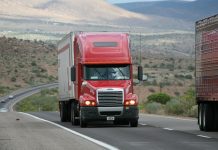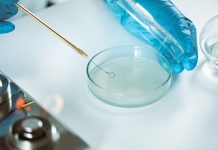According to the Food and Agriculture Organization reports, people will need to grow 60 percent more food to support a world population of 9.3 billion by 2050. With the challenges the farm industry faces now, using traditional farming methods may not be enough. This could also increase the strain we already place on our natural resources.
This is where Artificial Intelligence can help. The market for AI in agriculture is expected to grow from 1.7 billion in 2023 to 4.7 billion by 2028. This article will explore three major challenges that agriculture is dealing with today and illustrate how AI is helping to solve them with examples.
Major Challenges Farmers Face
Among the many problems in the agricultural sector, these three stand out because they affect people worldwide and have a big financial impact.
Pests
They destroy about 40% of the world’s agricultural output each year, which costs at least $70 billion. From taro caterpillars that wipe out soybean crops to tobacco whiteflies that harm tomatoes, the effects are widespread and the financial losses are huge.
Soil Quality and Water Use
Poor soil quality affects nearly 33% of the Earth’s soil. This makes it harder to grow crops and leads to losses of around $400 billion. Water shortages and inefficient irrigation also hurt farming. Farming uses 70% of the world’s available freshwater, but 60% is wasted because of leaky irrigation systems.
Weeds
They significantly reduce crop yield and quality even when using modern farming methods. About 1,800 types of weeds lower plant production by around 31.5%, which results in economic losses of about $32 billion annually.
How AI is Changing Farming
In farming, AI involves gathering data, using tools like computer vision and geospatial analytics, and applying methods like machine learning.
Here are examples of how AI is solving key farming problems.
Finding and Controlling Pests
AI helps farmers quickly identify and control pests. It uses data like weather reports, historical pest patterns, and images from drones or satellites.
For example, a device by Trapview traps pests using pheromones, takes pictures, and uses AI to identify them. With its database, the system recognizes over 60 pests, such as the codling moth and the cotton bollworm.
Then the device maps pests’ potential spread using weather and location data. Farmers receive alerts on an app, allowing them to act quickly. This saves money, cuts chemical use, and reduces crop loss. Trapview users report a 5% increase in crop yield and €118 million in total cost savings.
Checking Soil Health
Monitoring soil health is important for growing crops efficiently. AI uses data from sensors, satellites, and farm equipment to analyze soil conditions like moisture and nutrients.
CropX has created a platform that uses real-time data to help farmers understand soil conditions and crop performance. It measures soil moisture, vegetation growth, and other factors to improve farming strategies.
CropX users report cutting water use by 57%, reducing fertilizer use by 15%, and boosting crop yields by up to 70%.
Weed Control
AI-powered drones and robots can identify and remove weeds with great accuracy, reducing competition for resources between crops and weeds while limiting herbicide use.
Carbon Robotics uses computer vision and robotics to detect and remove weeds. Its LaserWeeder scans fields with over 42 high-resolution cameras and uses lasers to kill unwanted plants.
This system can clear up to two acres of weeds per hour with 99% accuracy. Farmers say they lower weed control costs by up to 80% and see a return on investment in one to three years.
How to Safely Transport AI-Powered Farm Equipment
Safety should always be the main focus when transporting agricultural equipment, especially expensive AI-powered machines. Improper transportation can lead to costly damage, accidents, and injuries. However, with the appropriate strategy, you will ship your valuable tools without any trouble.
- Choose a reliable freight forwarder with a lot of experience in agricultural equipment shipping. They must be familiar with local regulations where you transport your machine, prepare the necessary documentation, and know how to map out the route to avoid delays. Some offer extra services like disassembly and container loading, customs brokerage, and fumigation.
- Use appropriate tie-downs, chains, or straps to secure your equipment. Make sure it is stable and will not shift during transport.
- Small drones or robots can usually fit into one container and be shipped together. However, larger equipment like tractors and combines often need to be transported individually due to their size and weight and to prevent damage.
- Obtaining insurance is a great idea as it can protect your equipment from unexpected problems such as theft, natural disasters, and even mechanical breakdowns.
The Risks of Using AI in Agriculture
AI brings many benefits to farming, but it also comes with challenges that need attention, such as job loss, inequality, and ethical concerns.
- Job Loss
Automating tasks once done by people can lead to job cuts, both in physical labor and managing roles. - Widening Inequality
AI might mainly benefit large companies or wealthy farm owners who can afford advanced technologies, leaving smaller farms at a disadvantage. - Data Privacy Concerns
As farms increasingly rely on data from sensors, drones, and satellites, questions arise about who owns and controls this information. This could pose risks to farmers’ privacy.
Conclusion
Artificial Intelligence is revolutionizing farming practices while building a foundation for sustainable and resilient agriculture. It optimizes every stage of crop growth, from choosing the right seeds to harvesting and storage.
By analyzing real-time data, AI can adapt farming techniques to changing weather and other challenging conditions, ensuring crops remain healthy and productive. This ability to manage processes helps farmers maximize yields while promoting long-term sustainability.










































